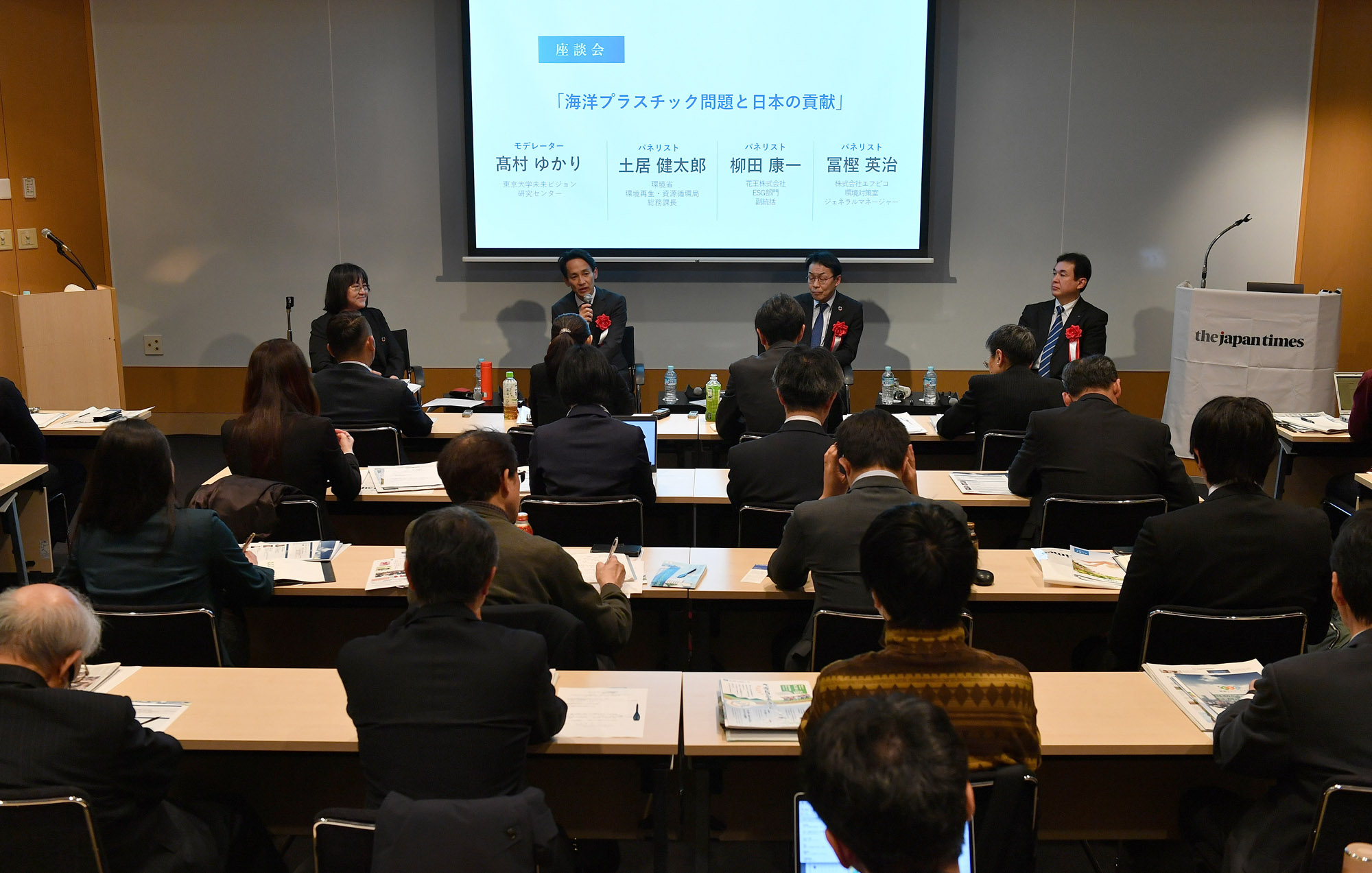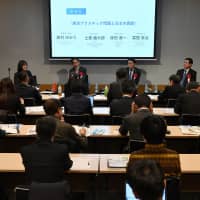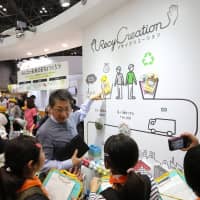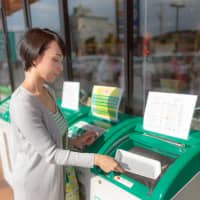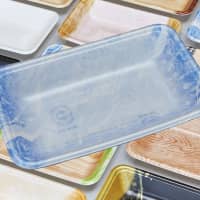Marine plastic waste is an ongoing and long-term problem that must be addressed for the betterment of the world for future generations.
As plastic that is not properly disposed of makes its way to the sea via rivers and other routes, marine plastic waste continues to accumulate. In one astonishing estimate, the weight of marine plastic waste is expected to exceed that of fish by 2050, according to a report by the Ellen MacArthur Foundation, a charity that aims to accelerate the transition to a circular economy.
Global leaders urge concrete actions. Goal 14.1 of the U.N.’s Sustainable Development Goals stipulates, “By 2025, prevent and significantly reduce marine pollution of all kinds, in particular from land-based activities, including marine debris and nutrient pollution.”
Marine plastic waste has been one of the most important subjects discussed in meetings of global leaders, and is slated to be on the agenda of the upcoming G20 summit in Osaka in June. Japan as the chair of the meeting, as well as an island nation, is expected to lead the discussion.
Prior to the summit, The Japan Times hosted a forum, “Issues on marine plastic waste and Japan’s contribution,” in Tokyo on April 1 to discuss what Japan can contribute to the world in tackling the issue. It was organized by the Japan Times ESG (environmental, social and governance) Consortium.
Kentaro Doi, director of the Environment Ministry’s Policy and Coordination Division, Environmental Regeneration and Material Cycles Bureau; Koichi Yanagita, vice president, ESG, Kao Corp.; and Eiji Togashi, general manager, Environment Management Department, FP Corp. (FPCO), participated in the forum.
The forum moderator was Yukari Takamura, a professor from Institute for Future Initiatives, the University of Tokyo.
Below are excerpts of the forum discussion.
Moderator: Plastic is very convenient for us, but it’s also a major source of waste. I used to live in Nagoya and the rules for sorting waste were very strict. I realized most of what I threw away was plastic.
More than 400 million tons of plastic is produced a year in the world, and the majority is made from fossil fuels.
The amount of waste has been increasing rapidly since the 1950s and about half of the waste comes from plastic packaging. And notably, half of the waste comes from Asia. China is the largest producer of plastic packaging waste, but in terms of the amount per capita, the U.S. and Japan are the top two countries respectively.
Today’s topic is marine plastic waste, but another concern is microplastic emerging from fragmentation of plastic waste, which may also have negative effects on ecosystems.
According to one shocking estimate, the weight of marine plastic waste is expected to exceed that of fish by 2050. Also, if we continue to use plastic, it would account for 15 percent of the emissions allowed in order to achieve the 2-degree goal (a goal to keep global warming well below 2 degrees Celsius) as stipulated in the Paris agreement.
We are taking actions globally. The goal of reducing marine plastic waste is included in the SDGs, and some of the most important countermeasures are to prevent disposing plastic into the sea and establish systems for collecting plastic waste.
Marine plastic waste was among the themes discussed in the Ise Shima G7 summit in 2016. Last year in Canada, the Ocean Plastics Charter was signed without the U.S. and Japan, and it is one of the most important subjects expected to be addressed in June’s G20 summit in Osaka.
Amid such situations in Japan and the world, how do companies address this issue? I am very keen to ask what Kao Corp. and FPCO are doing, but before doing so, I would like to ask Mr. Doi about how the Environment Ministry views the issue.
Doi: Marine plastic waste is at the center of worldwide discussion. I think there are three factors that came up simultaneously.
The first factor is negative economic impact. Plastic waste has a negative effect on marine creatures, and the waste gathered on seashores is ugly and keeps tourists away.
Second, plastic waste is made of natural resources and there have been discussions on efficiently using non-renewable resources for a long time. Plastic is one such resource that we can deal with relatively easily for efficient consumption.
Third, China and other countries have banned importing used plastic. As far as Japan goes, we produce 9 million tons of used industrial and household plastic, a year, 1.5 million tons of which had gone to China. However, amid restrictions on imports by China last year and the year before, exports to China have basically stopped.
To be sure, Japan, in compliance with the Basel Convention on the international transportation of hazardous waste and the Waste Disposal and Cleaning Law, does not export plastic waste, but rather exports used plastic. The Waste Disposal and Cleaning Law stipulates waste must not go out of country unless the environment minister approves, and the minister has never approved any plastic waste leaving Japan.
Therefore, China’s import ban means the country stopped purchasing used plastic for recycling. I imagine Japanese companies are now increasing their recycling capacities after China’s policy change.
There are common points as well as differences in these three factors. The government needs to come up with measures by taking them into account.
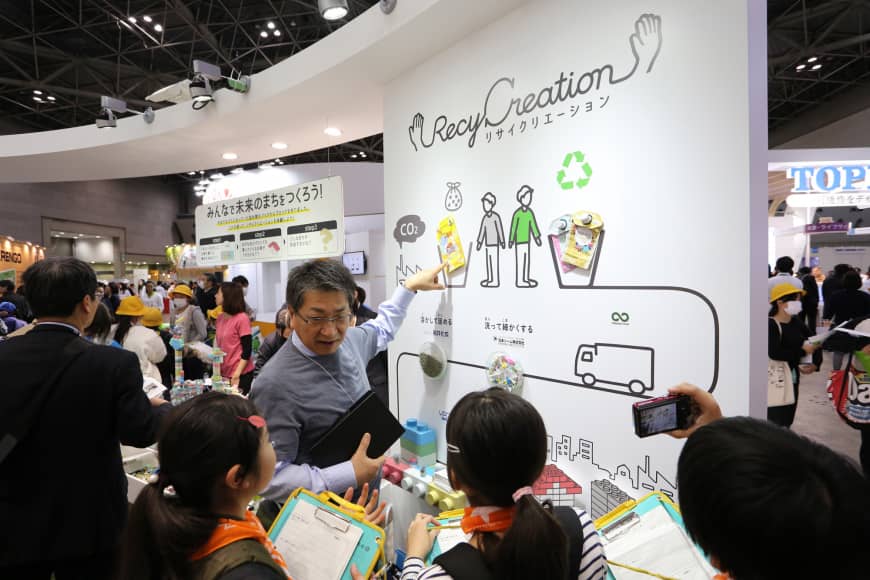
Moderator: Now I would like to turn to Mr. Yanagita of Kao. Kao’s motto is to enrich the lives of people worldwide and contribute to social sustainability. We are using mass-produced products with plastic packaging and containers that are very easy to use. What is Kao doing to tackle plastic problems without sacrificing usefulness?
Yanagita: First of all, Kao ships 3 billion products in Japan alone. Dividing that by 50 million households, each household buys about 60 Kao products a year.
And all those products are in containers. Most of our products are liquid or powder, and we can’t help using lots of plastic. Almost all of our product containers become plastic waste.
Also, Asia is a growth market for us and we think it is a very serious issue (that Asia produces so much marine plastic waste).
Due to this, we believe we have to come up with solid strategies to tackle the plastic waste issue. Last October, we compiled guidelines on containers for our products. Our basic policy is to minimize the amount of plastic we use, and recycle plastic as much as we can.
There is an industrywide movement to produce products (such as soap and detergent) using thin, soft plastic refill pouches (instead of thick conventional plastic bottles) to reduce the amount of plastic used, and Kao is leading the industry in Japan on this.
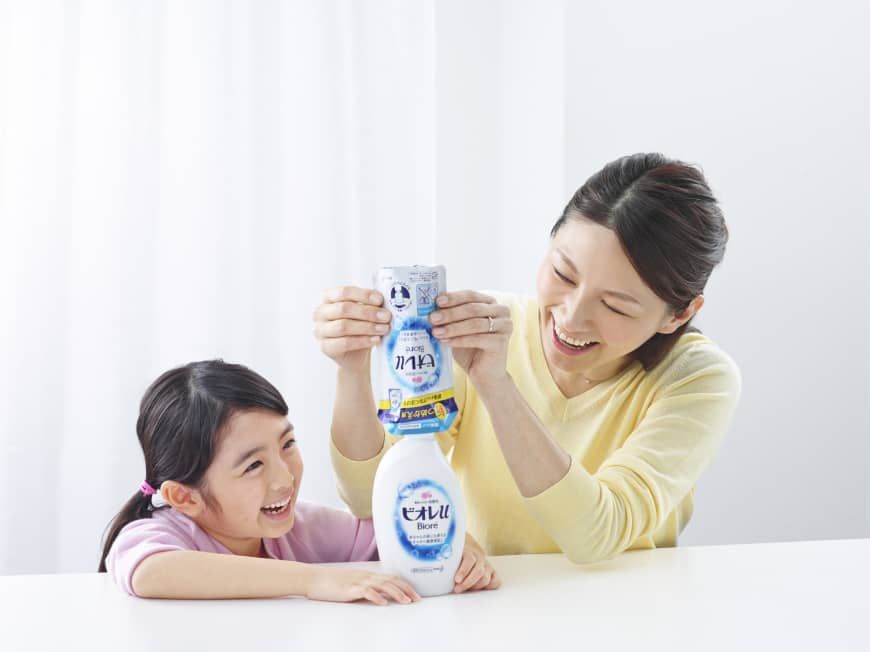
The refill pouches use one-sixth as much plastic as bottles. About 84 percent of Kao’s products in containers use refill pouches.
Overall, by creating refill pouches, as opposed to creating only bottles, we’ve reduced plastic use by 74 percent.
For more than 20 years, we have done many things to raise the ratio of consumers purchasing refill pouches. The newest invention is holders for refill pouches. Consumers who buy the holders will not have to buy plastic bottles at all. We are now modifying refill pouches of as many products as possible to increase the number of our holder-compatible products.
As I mentioned earlier, our policy is to reduce the use of plastic and recycle the plastic we use. I won’t talk about our recycling efforts as we don’t have time, but we are collaborating with municipalities and other parties to realize the recycling of refill pouches for shampoo and other things.
Moderator: FPCO is Japan’s No. 1 maker of plastic food trays and is working on producing good designs and functionality. It is also working on recycling. How does FPCO view marine plastic waste problems, and what is FPCO doing to tackle the issue?
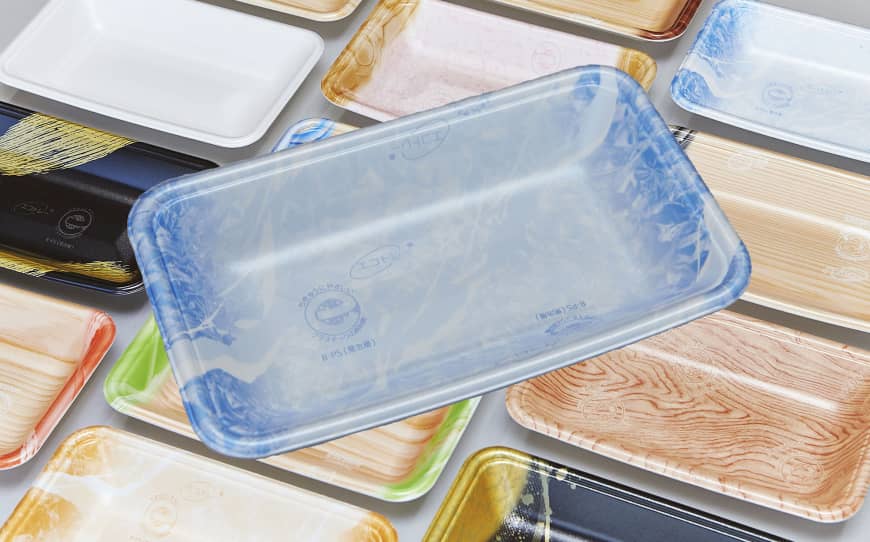
Togashi: The marine plastic waste problem was thrust into the spotlight recently after China restricted imports of used plastic. Additionally, reducing waste is a long-standing issue the world has been dealing with. Following discussions at the G7 summit, it has garnered more attention globally.
We have actually been recycling for 30 years, long before the enforcement of the law on recycling goods containers. What triggered us to do this was the social movement of reducing waste. We began collecting our products and recycling out of worries that our business would not be sustainable otherwise.
This is our recycle flow (indicating a chart showing FPCO’s food trays that consumers wash, dry and take to recycle bins at retailers, which pass them to wholesalers that send them to FPCO). The most important thing is that our contribution is not that great. What is great is that consumers wash, dry and take the trays to supermarkets. The recycle flow does not work without the efforts of our consumers.
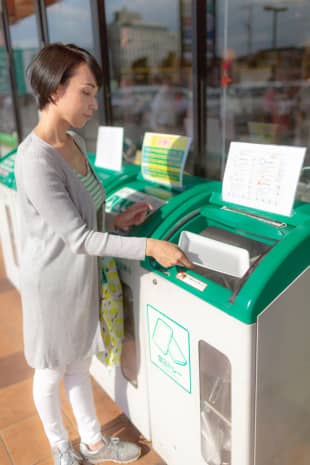
We are often asked if we ask supermarkets to put out recycle bins. We don’t; supermarkets voluntarily put them out as part of their corporate social responsibility activities.
If municipalities are involved in recycling, it takes taxpayer money to collect food trays and other goods. Our system works through the cooperation of consumers, retailers, wholesalers and FPCO.
There were various problems when we started recycling. For example, waste from households is consumer waste, but the same waste will become industrial waste once it’s in supermarket recycle bins. Industrial waste is regulated under the Waste Disposal and Cleaning Law, which assumes people are inherently bad and is therefore very strict. The law is not really compatible with the idea of creating a recycling society, and that has caused us to struggle over the past 30 years.
What we want to stress is that we are creating one-way containers that go all the way to individual consumers and are recyclable. We no longer condone “use and dispose.” Our products are made of a single material, making recycling possible.
We created posters encouraging consumers to recycle and gave them to supermarkets and other retailers to put in places to grab customer attention. As of the end of March, the posters were at 5,200 outlets of 122 companies.
Some plastic containers are made of multilayers of different materials and recycling them is unrealistic because separating the layers is difficult and costly. Plastic bottles can be thermally recycled by (burning them and using the heat to generate power).
We are doing many other things for the environment, but I’ll skip discussion on this due to lack of time.
Moderator: Accelerating circular economy in plastics is garnering a lot of public attention at the moment. I would like to ask Mr. Doi what policies the government needs to implement for that purpose.
Doi: The Cabinet members agreed on the revision of the basic plan on establishing recycling-based society in June, and what’s new in the revision is to come up with “three R” (reduce, reuse and recycle) strategies based on material, rather than product. The plan includes coming up with strategies to recycle plastic.
One of the main points of the plan is to stipulate numeric goals. There are numeric targets on reduction of greenhouse gas emissions, the amount to reduce, reuse and recycle and other environmentally friendly activities.
The G7 summit was held in Canada in June and the host country proposed the Ocean Plastics Charter. Country leaders were engaged in heavy discussions on that and Japan recognized it as a very serious issue. However, Japan argued that the G7 is not an appropriate forum to discuss the issue, saying that the G20 or other forums would be more suitable. There are no solid statistics, but a compilation of various research suggests the G7 accounts for only 2 percent of plastic waste. The G20 accounts for about 50 percent, and that plus the Association of Southeast Asian Nations (ASEAN) would be 70 percent.
Therefore, we should involve at least the G20 and aim to involve Asia and ASEAN. The government’s plan broadens the range covered by the charter, includes more details than the charter and shortens the time frames for goals covered by the charter. Importantly, the plan also stipulates international cooperation is essential.
Therefore, this year’s point is to at least make a system G20 leaders can agree on. And I think it is important for everybody to review the system and confirm progress by sharing information.
From that perspective, Japan’s support for developing countries would be very important. It’s similar to the issue of global warming, but the clear difference is that residents of developing countries will get clear benefits in reducing plastic waste, while they may find the benefit of mitigating global warming hard to recognize. Therefore, I believe the reactions of each country receiving support on plastic waste reduction will be very different.
Moderator: I have an additional question. On China and other countries banning imports of used plastics, how should Japan cope with such a situation?
Doi: A noticeable point is that plastic comes in many types, each of which has different functionalities. FPCO’s trays are made of only styrene and thus collecting them yields great value. But mixed plastic is not so valuable without separation by type.
My understanding is that doing the separating job in Japan is not cost-effective, and thus companies tend to export mixed plastic to be separated in other countries where costs are lower. But they cannot export (to countries that have banned importing used plastic) and have to separate mixed plastic at home.
To address this, the Environment Ministry set aside ¥9 billion in a supplemental budget for fiscal 2018 and the regular budget for fiscal 2019 as a subsidy to create high-quality recycling facilities in Japan. But it takes time and we are working with incinerators in the metropolitan area to secure capacity.
Moderator: What is Kao doing in terms of recycling? Also, do you have any suggestions for the government?
Yanagita: As I mentioned before, our policy is to reduce plastic use and recycle what we use. On reducing, we will improve refill technology. Our plastic bottles are actually multilayered, so we have to burn them for the most part.
But we are also recycling some of the multilayered plastic by collecting mixed plastic of the same type. We are doing it on trial basis with five municipalities in Japan to make toy blocks out of the collected mixed plastic.
We are also developing technology to make single-layer bottles that we can recycle.
Also, as the marine waste problem is becoming very serious, we have periodically joined various consortiums to meet with food and beverage makers, as well as wholesalers, to exchange knowledge. We, a toiletry product maker, tend to make refill pouches as a way to tackle the plastic waste problem. Beverage makers recycle plastic bottles and their recycling ratios are very high. Food makers are working on making thinner plastic packaging and containers.
I believe Japanese technology is very good. I would like to take our technology and expand to Asia. However, it may be difficult for companies alone to do so, and I would like the government to support us.
Moderator: Mr. Togashi, as a manufacturing company making these products, what area does FPCO focus on? Additionally, do you have any requests or suggestions for the government and municipalities?
Togashi: Since we manufacture food containers, of the three R’s our priority is “reduce” in the waste management hierarchy. As a business, reducing leads to profits. However, the initial function of containers and packaging is to protect the food inside, and reducing weight and making materials thinner have reached their limits.
We are a one-way packaging company, so “reuse” does not apply in our case.
“Recycle” is something that we have worked for 30 years to establish, and it falls under extended producer responsibility. Recycled products will be born again as new products.
Collecting recycled items is where the most costs are involved, but we continue to do this since the items will eventually become products, which means we’ll see profit there. Based on our founder’s philosophy, we intend to continue recycling, as long as it doesn’t incur a loss.
Japan has a law called the Containers and Packaging Recycling Law. FPCO’s circular recycling is something that we do on a voluntary basis. Plastic bottles collected based on the law are traded as resources. Other plastics are quite difficult to deal with since many are not made only from single materials, but made from composite materials as well.
Manufacturers and retailers or wholesales that use plastic, in other words parties that are classified as specific business entities, are required to fulfill their obligations through paying recycling fees. However, white trays are collected together with other plastics. Since we’ve been collecting white trays as resources from consumers at supermarkets through collection bins even before the act went into effect, we asked municipalities to separate white trays from other plastics.
Unfortunately, due to the cost of collecting and sorting, only about 10 percent of municipalities out of 1,500 participate in the separation of white trays. Since our voluntary circular recycling method is proving successful, I would like to ask more municipalities to participate in this separation.
Moderator: Asia is now a hot spot in terms of the volume of plastic production, as well as waste generation. It is also a key area in marine plastic pollution. Mr. Yanagita, since you raised the issue, and since Kao has business locations across the large Asian market, what efforts is Kao taking on plastic waste?
Yanagita: In some areas we sell refillable products, but sales are not as strong as they are in Japan. We’ve learned that instead of refilling bottles, consumers are using products directly from refill pouches and we need to conduct further research.
Although we can bring concepts abroad, we need to revise and tailor technical specifications or products to suit local users. Simply bringing Japanese products and expecting them to be accepted is unrealistic, so we need to research what would be popular in a particular country.
Moderator: Mr. Togashi, with your creativity and readiness to deal with various markets, do you think FPCO has a lot to contribute to Asia in this area?
Togashi: Actually, we were recently approached by a retailer with many stores throughout Asia to execute the FPCO recycling method there. However, we politely declined. We’re not sure whether people will bring plastic trays and bottles to collection bins in countries where the recycling custom is still not established or whether we can find good collection operators.
Moderator: Both of you mentioned that you can’t simply bring a Japanese system, including a recycling system, and expect it to work in other Asian countries. Adjusting to suit local markets is known as co-innovation in international cooperation for climate change. In other words, we need to identify what other countries need, understand their systems, technology and interests to collaborate together. This is a way Japan can contribute.
Mr. Doi, Japan must deal with its own issues, as well as plastic waste in Asian countries. Could you talk about our government’s policies or measures to resolve the problems in Asia?
Doi: I think there are three measures we can take in this area. First is to establish an appropriate disposal framework. Next is to promote energy-from-waste for countries with limited landfill space and finally we need to fully enforce the three R’s.
Looking back at how things used to be in Japan, personally I think our structure of appropriate disposal went into full effect in the early 1990s, when the dioxin problem was dealt through proper disposal and landfill. Japan suffered the most during the 1960s and 1970s, so it took us some time to establish today’s disposal structure.
Around the same time, talks on generating electric power or utilizing incineration heat began. Since the early 2000s, when a municipality builds an incinerating factory, it basically generates energy.
Additionally, in the 1990s, the Containers and Packaging Recycling Law went into effect as a law first covering waste, followed by home electrical appliances, construction material waste, food and automobiles. We’re saying that Japan has a good waste management system, but it took a while to establish. Simply bringing our system to other Asian countries may not be an immediate fit, but we can offer advice on how we overcame various issues and move forward together.
In order to stop marine waste, it is critical to establish appropriate disposal and there are two major issues facing developing countries. One is that proper collection does not take place in all areas. The second issue is that collected waste can outflow, since it is stored outdoors.
The Ministry of Foreign Affairs and the Japan International Cooperation Agency (JICA) have been struggling and tackling these issues. For example, JICA specialists started the Clean Dhaka campaign about 10 years ago and recently managed to collect 80 percent of waste, compared to only 40 percent before they started.
This was achieved by making local waste collectors feel proud of their work and educating residents on how waste sorting and collection would actually improve their living environment. This was accomplished through considerable effort of the people involved, without a large expenditure.
Landfill makes a huge difference when covered by properly aerated soil. The Fukuoka Method, a semi-aerobic landfill structure, developed by the city of Fukuoka and Fukuoka University in the 1960s, is gradually coming into wider use. Utilizing either of these should make a significant difference.
This will directly improve the living environment and it’s easy to see the benefit. It is also important to generate electricity and simultaneously promote the three R’s. I think refillable containers are wonderful and hope they will expand worldwide. We would also like to cooperate in coming up with ideas that best suit each country’s consumers.
Moderator: Since this forum’s theme is “Issues on marine plastic waste and Japan’s contribution,” Mr. Yanagita and Mr. Togashi, do you have any comments to add regarding contributions Japan can make in these Asian countries?
Yanagita: I have a question to Mr. Togashi, as I am quite interested in FPCO and went on a factory tour the other day. Recently we’ve seen colored trays, for example sashimi trays, which are black, red and gold. Can these trays be recycled into white trays?
Togashi: Material-wise they can be recycled since they are polystyrene, but they will not become trays. We melt them into pellets and use them as raw material. However, only white ones, which account for about 70 percent of what is collected, will be recycled into trays. The others will be sold and recycled into items such as black plastic clothes hangers.
Yanagita: Perhaps it may differ depending on how much can be recycled, but cosmetics and toiletry products are quite different. For cosmetic products, we pursue elaborate design and pretty containers that weigh more and are often mixed or unable to be recycled. I think if we can incorporate a message that recycling is cool or that recycling will lead to consumer satisfaction, this issue can be dealt with more efficiently.
Doi: I feel there are possibilities in the field of e-commerce, which has become quite popular, where the role of containers and packaging could change. Recently, beverage and men’s apparel retailers spoke with the environment minister. For e-commerce sales, beverage companies do not label their drinks, since consumers know what they are purchasing.
Men’s dress shirts have plastic, which weighs about 25 grams, in the collars to maintain shape before they are sold. Since they are delivered to homes, retailers decided to remove the plastic, minimizing 25 grams of plastic per shirt. Shirts all over the world have this plastic, so there is a possibility that the way shirts are sold may change. I think this could be an interesting area to pursue.
Moderator: Perhaps there could be ways for different industries to work together on a system to promote recycling in different areas or create opportunities for people to willingly select products or materials that are easy to recycle.
Yanagita: We are changing our management style setting ESG as the management platform. At the same time, we also need to change. It is easy to say “innovation,” but I don’t think we will reach our goal by continuing what we have done in the past and simply stacking up ideas for innovation.
What Mr. Doi mentioned about e-commerce is also relevant. Since customer expectations are changing, we need to offer something different in terms of quality, rather than just continuing the status quo. I think the solution is to think in a backcasting scenario.
Moderator: As we are finishing up, please share your thoughts, including expectations for the G20 in Osaka and for Japan, as the plastic issue is expected to be a major topic for discussion.
Togashi: For the G20, Japan has many good qualities that are uniquely Japanese and different from Western countries, so I hope they will be shared with confidence. I think Japanese people need to be aware that our society and lifestyle will change. Since depopulation in rural areas continues, waste disposal and energy strategy will become issues in the future.
Japan’s plastic bottles are mainly transparent for recycling purposes. You will not see this in Western countries where colored bottles exist.
As Japan will face greater labor shortages, the Ministry of Economy, Trade and Industry is working to promote IC tags for retail businesses. Once this becomes widespread, IC tags will have information on item ingredients, and our industry is requesting to also add recycling information, such as what the packaging is made of. I hope to see this trend gain popularity as the “internet of things” (IoT) widely spreads.
Yanagita: Marine plastic waste is an important issue, and there are various groups involved in this, but everyone is doing something a little different. As this seems inefficient, I would like the government to take on a leadership role to create a broad trend, so we can eventually make international contributions.
Doi: We just started a recycling economy based on material instead of product last year, and plastic is one material. There is no one method that will cover a large portion of the plastics that are so prevalent in people’s daily lives and economic activities. However, to resolve this challenging matter, we need to work together and move forward even if only through small steps.
In this sense, keeping up with technology is important. I think it is Japan’s area of specialty to overcome this issue by utilizing IOT, artificial intelligence (AI) and other technologies. Not only do we need AI for recycling, we also need it in the area of disposal systems as we intend to pursue this.
Also, changing people’s actions is difficult, and I think we need to work on this. Personally, I am most concerned about trash bins. Trash bins can pose problems as some counterterrorism policies require removing trash bins from public places. Even when they are in place, people do not always separate trash properly and it is important that they are properly used and the trash is disposed of correctly.
Moderator: Mr. Doi, could you share with us how you expect this issue to be treated at the G20?
Doi: Expectations are very high both domestically and from participating countries. We all want to see an agreement reached, to move forward from here.
Moderator: Before closing, I would like to touch upon some points that deeply impressed me. First, Japan can make large contributions domestically and overseas, through taking proper actions and resource circulation.
How to produce products, what materials to use, product design that leads to recycling and collecting as well as sorting for recycling all fall under this. FPCO’s recycling method and Kao’s product development are things that we could showcase to other countries.
As seen in our resource circulation strategy for plastics, we have reached a stage where we need to set an ambitious goal on what kind of resource circulation and society we want to build, and find the best ways to achieve the goal together. By doing so, we should come up with a new way of thinking, new ideas and make innovation happen.
Finally, the plastic issue seems to be a great opportunity for Japanese companies to expand their market and contribute to solving the problem. As the plastic issue raises interest globally, Japanese companies should effectively spread their solutions, technologies and unique products to other countries that need to adopt the three R’s and appropriate disposal methods.
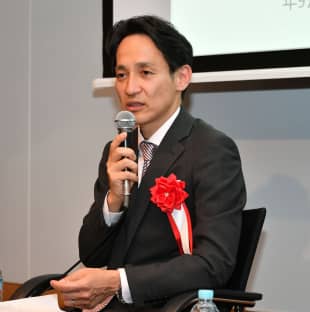
Kentaro Doi, director of Policy and Coordination Division, Environmental Regeneration and Material Cycles Bureau, Ministry of the Environment
Born in Sapporo, Hokkaido, Kentaro Doi graduated from the Hokkaido University Graduate School Faculty of Engineering and entered the Ministry of Health and Welfare in April 1990. Doi started working at the Global Environment Bureau in July 2014 where he was appointed director of the Climate Change Policy Division. In October 2015, he was appointed director of the Fukushima Environmental Revitalization and Resource Office. He assumed his current position last April.
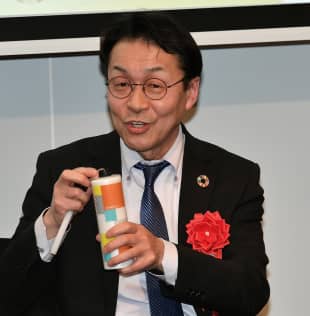
Koichi Yanagita, vice president of ESG, Kao Corp.
Koichi Yanagita joined Kao Corp. in 1985. After working at various departments, Yanagita was appointed manager of Processing Development Laboratories in 2000 before moving on to become manager of Packaging Development of Global Research and Development in 2002. He was appointed vice president of Environment and Safety in 2008 and then became general manager of Corporate Sustainability in 2016. He assumed his current position last year. Yanagita is an expert in the field of plant, packaging and universal design as well as responsible care.
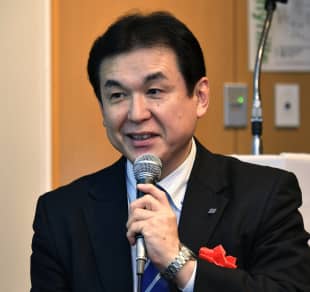
Eiji Togashi, general manager of Environment Management Department, FP Corp.
Eiji Togashi joined FP Corp. in April 2000 and started in the Sales, Planning and Controlling Department. He was appointed chief manager of personnel in 2007. In October 2010, he became senior manager of the Corporate Planning Department before becoming senior manager of the Environment Management Department in April 2012. He assumed his current position in August 2012. In order to promote FPCO recycling methods, Togashi proactively shares information with government agencies and supports consumer recycling activities.
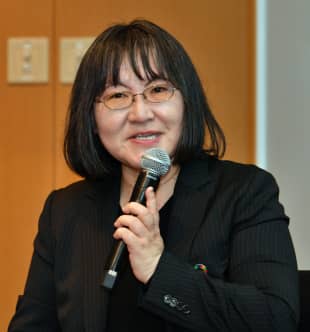
Yukari Takamura, professor, Institute for Future Initiatives, the University of Tokyo
Yukari Takamura graduated from Kyoto University and moved on to Hitotsubashi University Graduate School of Law. As a professor at the University of Tokyo, she specializes in international and environmental law with a focus on legal and governance issues regarding environmental agreements. She serves as a member of various government advisory bodies, including the Science Council of Japan and Central Environmental Council. She is also a member of the Asia Development Bank’s advisory group on climate change and sustainable development.
This page has been produced with the support of the Ogasawara Foundation for the Promotion of Science and Engineering, which was founded by late Toshiaki Ogasawara, the former chairman and publisher of The Japan Times. This page is also part of the series that highlight ESG (environmental, social and governance) activities of companies and other organizations.



